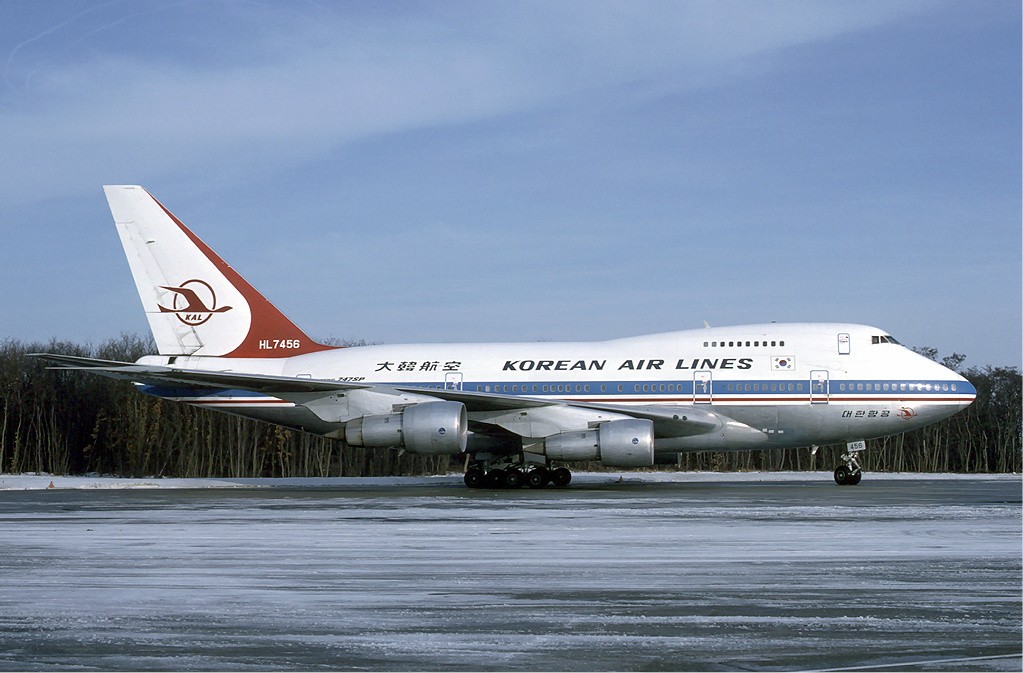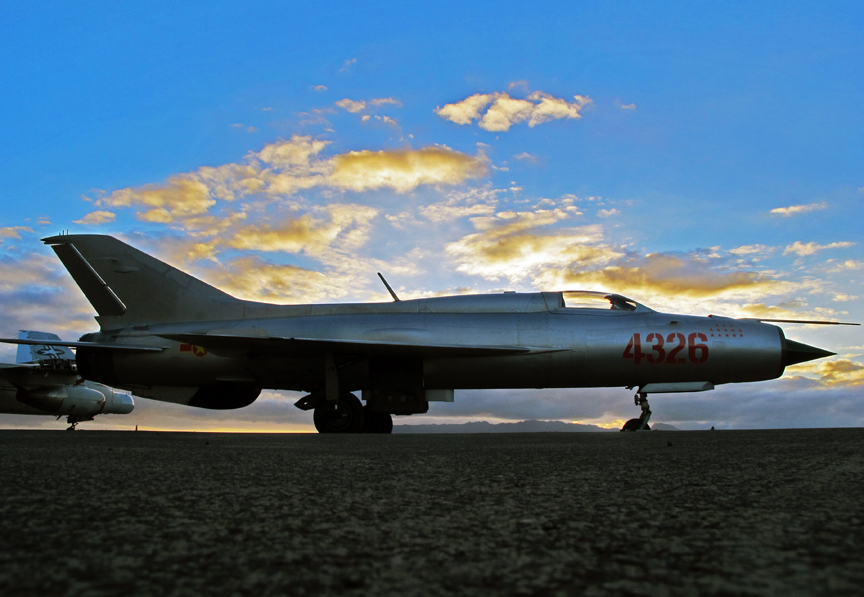KAL902

From Wikipedia
In the 70s many US/NATO reconnaissance aircraft spying the USSR would fly in from the area of the North Atlantic or even the North Pole. It was a high tension area. Times were different. Civilian aircraft wouldn't fly from Europe to Asia like they do today, over Russia.
Korean Air Lines flew their aircraft from Paris to Seoul via Anchorage, Alaska using a Boeing 707. On April 20 1978, one of those flights, KAL902, took off from Paris Orly Airport. A total of 109 people were on board. The route to Anchorage took the 707 over the UK, Norwegian Sea, northern Greenland, quite close to the North Pole. Both magnetic and "physical" Pole.

KAL902's route (from Wikipedia)
The airplane had no INS (http://aerostudents.com/files/avionics/InertialNavigationSystems.pdf), nor GPS. Due to errors with calculating magnetic declination, when over Ellesmere's Island, the plane turned right. The proximity to the North Pole played the biggest role in making this mistake. Afterwards, the plane passed over Svalbard, then Barents sea, closing the USSR border. With no ground reference, as the areas of north Greenland or the Arctic Ocean are pretty much the same to the route flown after the change of course, Korean pilots didn't realise their mistake. They might haven thought about it, but maybe they were to tired, lazy or basically trying not to think, that they did something wrong.
Soviet radars spotted the plane at 20:54, while 400km away from the border. They first assumed, that it was one of naval aircraft from Murmansk, coming back from it's mission, having not changed his IFF code. At 21:19, flying over Kola Peninsula, the 707, with crew unaware of the danger they have flown into. On the ground, Su-15 pilots were ordered to take off and intercept the intruder. Mach 2 capable, the Su-15 would be able to intercept the slow flying 707.
 Sukhoi Su-15
Sukhoi Su-15From Wikipedia
One of the pilots, Alexander Bosov, identified the planes as the RC-135. The RC-135 is a reconnaissance aircraft design, based on the 707. Another thing that proved bosov to be right was the "Maple leaf" on the intruder's tail. The Su-15 pilot thought, that the RC-135 (in fact 707) belonged to Canada, a NATO country. The commander told the base about his faulty observations. Why faulty?The Leaf was actually a stork with spread leafs and Canadian Air Force never operated the RC-135, nor any military 707 variation (A 707 was used for VIP transport).

Korean 747-SP. The "maple leaf" can be seen on the tail.
From Wikipedia
Soon, Bosov noticed, that the aircraft is in fact civilian, having Chinese characters on the tail, and the maple leaf, an airline logo. Bosov radioed the base, correcting himself, and saying that the airplane is civilian.

Source: Wikicommons
According to ICAO, an interceptor should fly up to the intercepted aircraft from the back, and then outrun the intercepted aircraft and stay in front of the intercepted airplane on the left side of it. The interceptors should wave their wings, which the intruder should interpret as: be aware and do what I order you to do. The intercepted airplane should do the same thing as the interceptor, showing, that they understand. Then, the interceptors should guide the intruder down to the closest airport or outside the border of the country (which in the intruder has flown into).

F-18 intercepts a Tu-95, USAF photo.
At the time, captain Kim (captain) noticed, that something is clearly wrong. The appearance of soviet aircraft showed, that he is far of course. The captain switched landings on, in order to show, that he is going to follow the Soviet aircraft. He tried contacting the Su-15s. But there was no response.

From Wikicommons.
Meanwhile the Soviet commander was ordered to fire at the Korean airliner. The commander-Alexander Bosov tried to convince ground about the fact, that the intercepted aircraft was civilian. Despite the fact, ground still ordered an attack on KAL902. The first missile (R-60 missile) missed the 707. The second missile, the same type, hit the left wing. The part of the wing fell off. It was about 3,5-4 metres long. Debris hit a part of the passanger cabin, causing a decompression and killing two people.
R-60 missile.

From Wikicommons
The last part of the flight isn't known in 100%. The crew descended the 707 from 30 000ft. KAL902 disappeared from Soviet radar. However, the sot down part of the wing was still on radar and mistook it as some kind of missile, dispatching another Su-15. The commander, Alexander Bosov was replaced, after his aircraft began running low on fuel. Meanwhile the 707 was searching for a place to land. Only one Su-15 followed the plane. The Sukhoi's pilot was probably trying to make the plane land in a Russian Air Base.
The Korean aircraft was still flying for about 40 minutes, close to the Finnish border around the region of Karelia. In April, most Karelian lakes are frozen. Captain Kim was trying to find one, in order to put his plane down. He attempted to land several times, however his efforts were all in vain. The 707 finally landed on the frozen Korpijarvi Lake in Karelian ASSR, around 140km from the Finnish border. The touchdown was very rough.
Crash site photographs: http://ilmari.puheenvuoro.uusisuomi.fi/78410-lento-kal-902-v1978 http://englishrussia.com/2008/06/03/the-korean-boeing/#more-1961

Crash site photograph (from Wikicommons)
After two hours 107 survivors were rescued from the crash site by Soviet helicopters. The rescuers first saw Coca-Cola, Beer or read western newspapers and magazines. Two people were dead, mainly because of the decompression, however details aren't known. Survivors were flown to the town of Kem.After two days passengers were released to the US consulate, in Leningrad. The crew was kept in Murmansk, and later formally apologised. Afterwards, they were released, too. In the end, everyone was flown back to Seoul and payed $100, 000.

An L-1011 equipped with INS. (From Wikipedia)
Who was at fault? At first, Korean Air. Why? In 1978 the INS was already in use. The shootdown plane didn't have such equipment. This mistake would have not been made, if an INS had been installed. Due to the proximity of the North pole, the route could have been changed, as well as stopovers. Perhaps a Paris-New York (Chicago, Toronto, Boston)-Anchorage (Seattle would make it, too, as well a Honolulu)-Seoul route would be better and safer. However, this isn't all. Soviet pilots were unfamiliar with ICAO procedures. There always night have been a situation, with a civil, non-Soviet airliner. This didn't happen. Quite importantly, the ground officers played the biggest role in the accident. There are a few things, that can explain decision, though they can be questioned (especially the third argument). The first one is that, they might have been tired and weren't sure, about what they were doing. Perhaps what Bosov said wasn't conviencing enough, If he sated, that "It might be a civilian plane, etc.", the ground could still think, that the 707 was on a spy mission, instead of a civilian flight. The third argument, is that ground could think, that a spy plane uses a civilian livery, in order to trick everyone out.
The lesson from KAL902 wasn't learnt. Later on, similar events happened. One of them KAL007, was eventualy one of the most tragic air disaster at the time, when it happened. 269 people died. Luckily, Cold war ended in 1991.
BTW
Remember, aviation is the safest way to travel! Don't forget about it!

Mig-21, a soviet fighter jet. (Source: Wikipedia)










